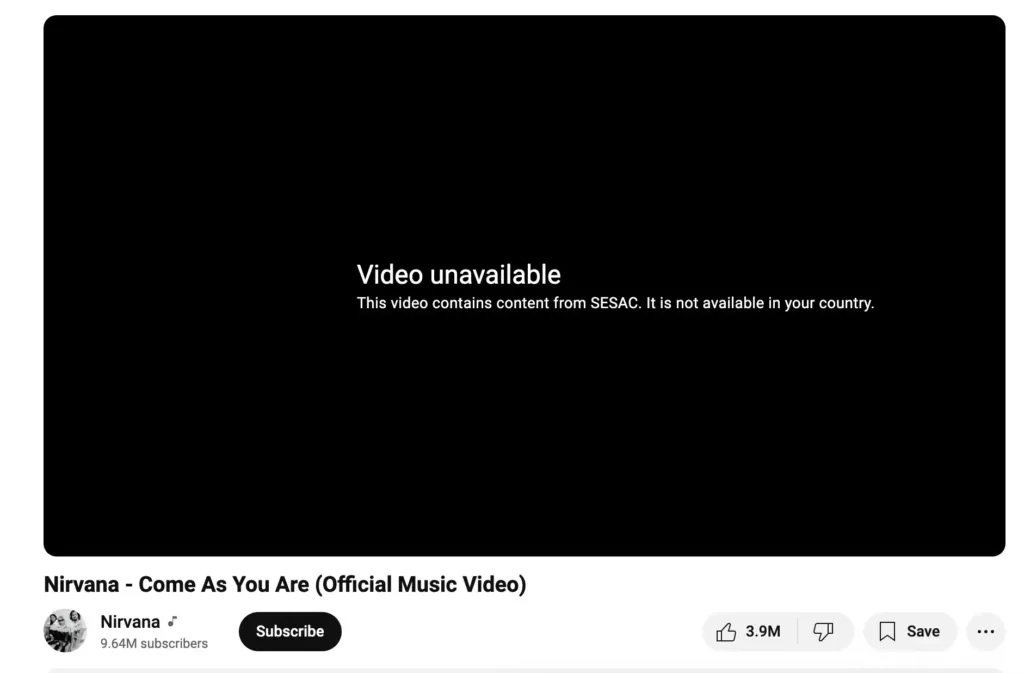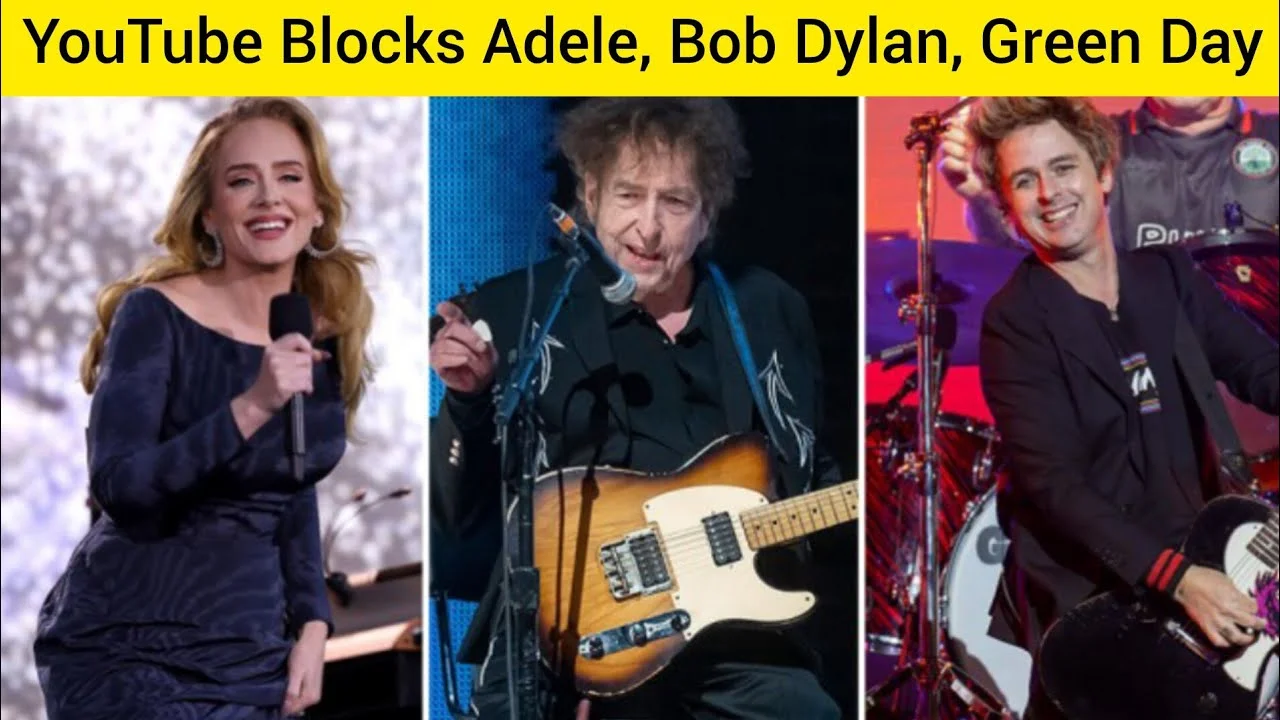The Article Tells The Story of:
- Licensing Issue: YouTube lost U.S. access to SESAC-licensed songs due to an expired agreement.
- User Frustration: Millions face blocked content, with many exploring alternatives like Spotify.
- Workarounds: VPNs help bypass restrictions but have drawbacks.
- Uncertain Resolution: YouTube and SESAC are negotiating, with no clear timeline for a solution.
Licensing Clash Leads to Music Blackouts
YouTube and YouTube Music users in the U.S. are facing a major setback. Songs by artists like Adele, Bob Dylan, Nirvana, Green Day, and Kendrick Lamar have vanished from the platform. Instead of streaming their favorite tracks, users are greeted with error messages.
The reason behind this issue is a licensing dispute between YouTube and SESAC (Society of European Stage Authors and Composers). SESAC, which manages performance and playback rights for over 15,000 songwriters, composers, and publishers, has blocked access to its licensed content due to an expired agreement with YouTube.
While the licensing standoff affects U.S. users, audiences in other regions continue to enjoy uninterrupted access to the same content.
Check Out similar Article of Monetize Your Streams: YouTube’s New Gifting Feature Explained November 20, 2024 – SquaredTech

SESAC: The Key Player in This Dispute
SESAC ensures that artists receive payment when their music is used on platforms like YouTube. However, without a renewed licensing deal, YouTube can no longer offer SESAC-licensed songs in the U.S.
YouTube spokesperson Mariana de Felice confirmed that while negotiations were conducted in good faith, both parties failed to reach an agreement before the contract expired. This resulted in content removal, leaving millions of U.S. users without access to popular tracks.
Speculation suggests this early content pull might be a negotiation tactic. Reports claim SESAC’s deal with YouTube wasn’t set to expire for another week, raising questions about the timing. By removing content, SESAC might be pressuring YouTube to finalize a deal under more favorable terms.
How This Affects YouTube Music Subscribers
The blackout has hit YouTube Music subscribers particularly hard. Suddenly, some of the platform’s biggest music draws are no longer accessible. Many users are questioning the value of staying subscribed when competitors like Spotify, Apple Music, and Tidal continue to offer uninterrupted access to the same artists.
On social media and forums like Reddit, frustrated users have expressed disappointment. Many are exploring alternatives, signaling potential losses for YouTube if the situation persists.
Temporary Solutions and Bigger Risks
Some users have turned to VPNs (Virtual Private Networks) to bypass the geo-restrictions. VPNs can mask a user’s location, enabling them to access blocked content by appearing to stream from outside the U.S.
However, this workaround isn’t ideal. VPNs often slow down connection speeds, and YouTube could strengthen its geo-blocking capabilities, rendering such solutions ineffective. For now, users are left waiting for a resolution, with no clear timeline for the music’s return.
YouTube’s Stand on Copyright
Despite the challenges, YouTube maintains its commitment to copyright compliance. Mariana de Felice emphasized the platform’s dedication to protecting intellectual property. She stated, “We are in active conversations with SESAC and hope to reach a new deal as soon as possible.”
However, this reassurance does little to ease user frustration. The lack of a definitive resolution timeline has fueled concerns that users may leave for rival platforms offering more reliable service.
What’s Next for YouTube?
The standoff between YouTube and SESAC has left U.S. users without access to beloved music. While negotiations continue, frustrated users are exploring alternatives, including switching to other music streaming services or using VPNs.
If YouTube and SESAC fail to resolve the issue quickly, the platform risks losing loyal subscribers. The longer the blackout persists, the greater the damage to YouTube’s reputation as a go-to music platform. For now, users can only wait and hope for a swift resolution.
More News: Tech News


